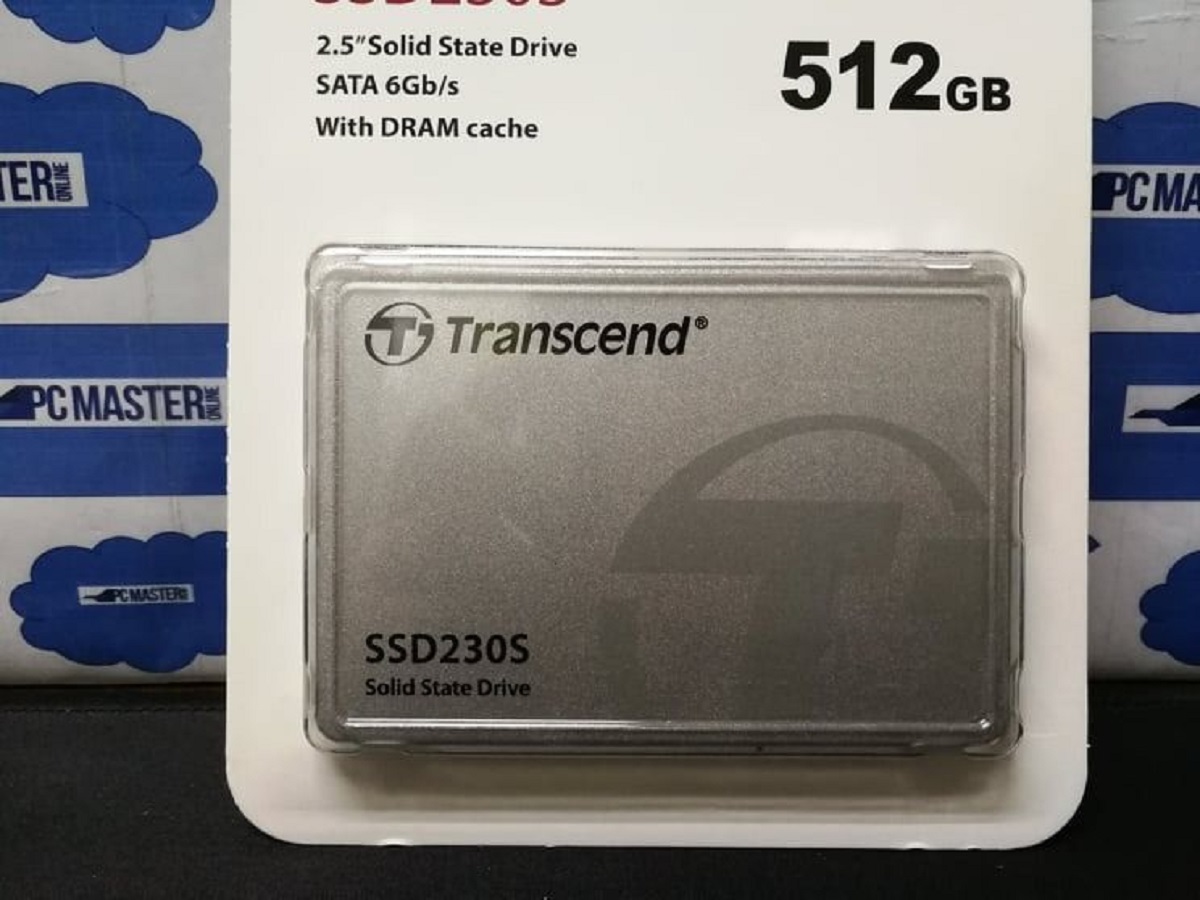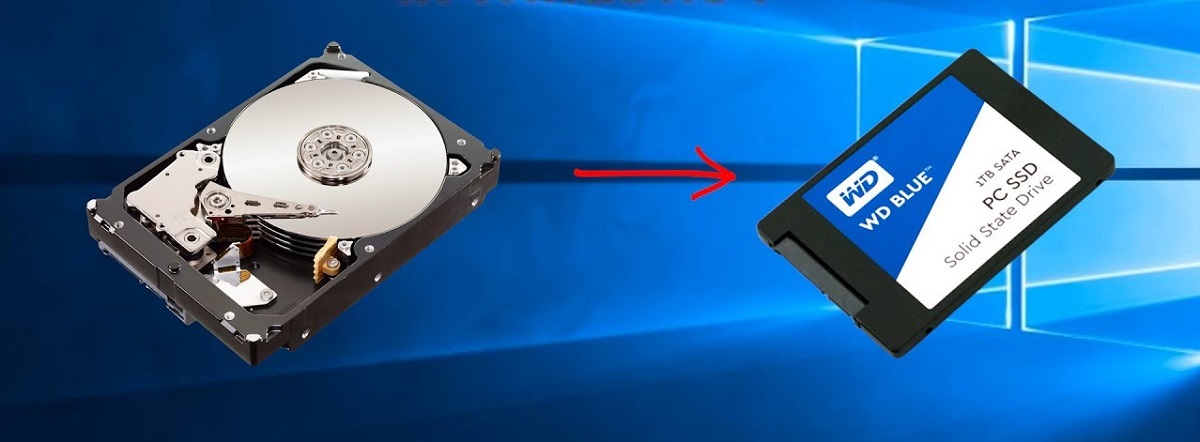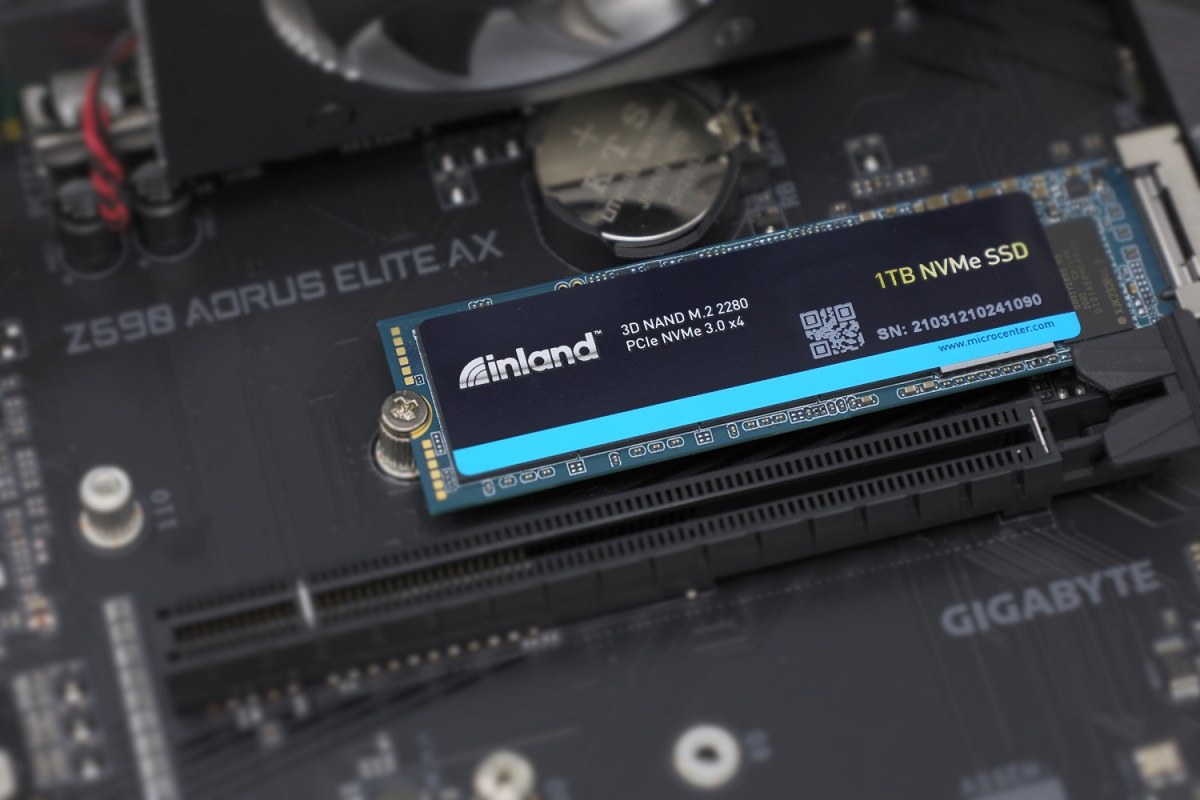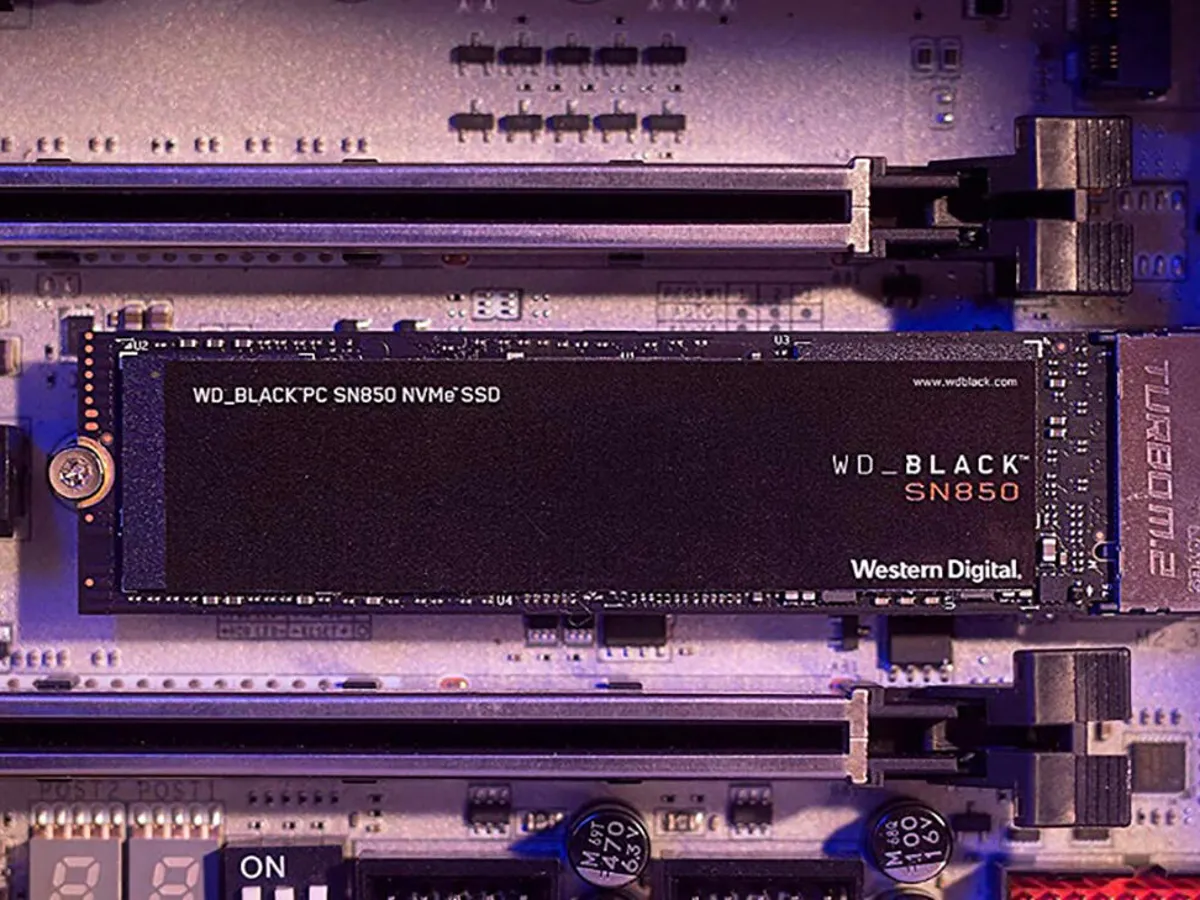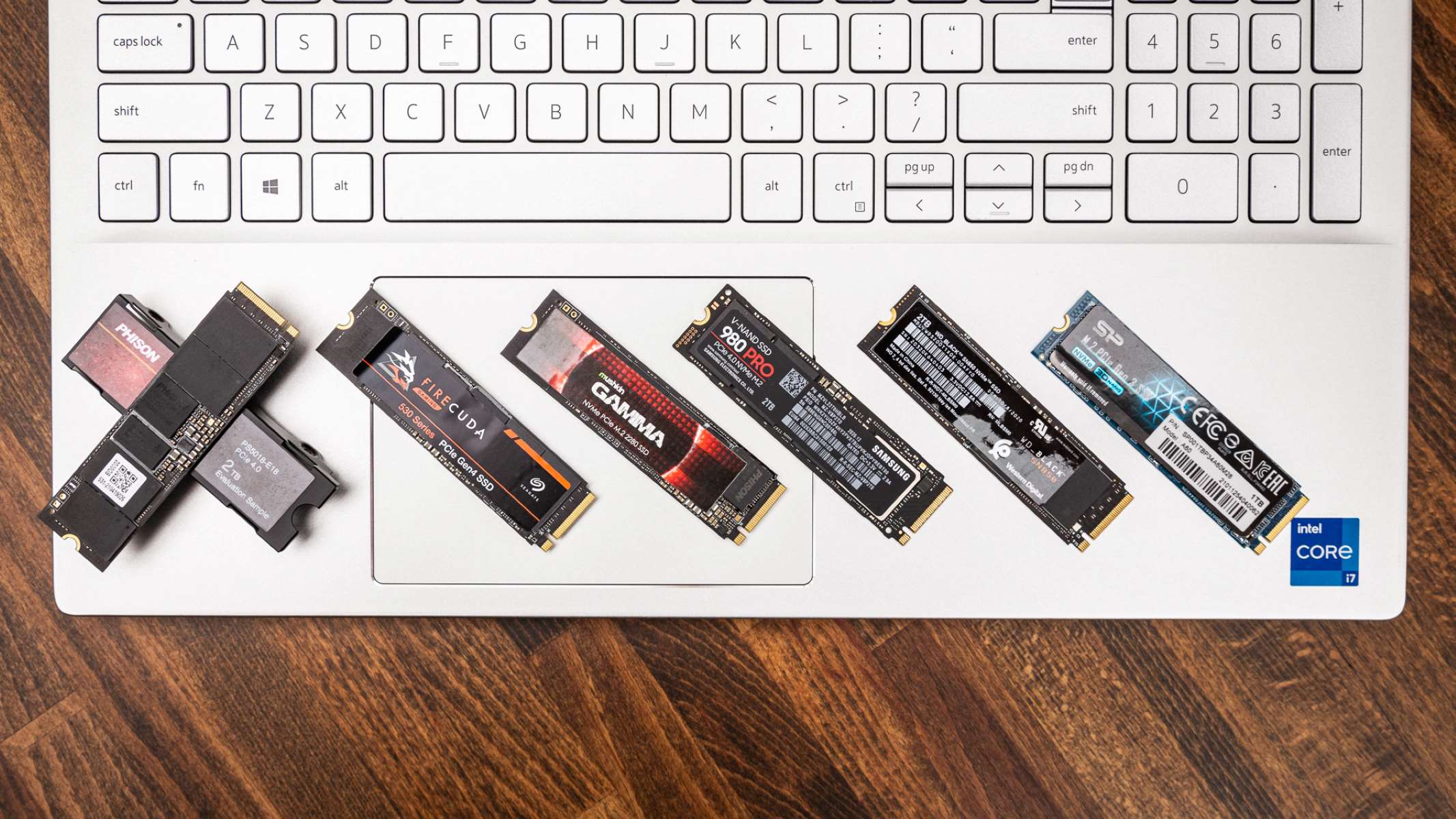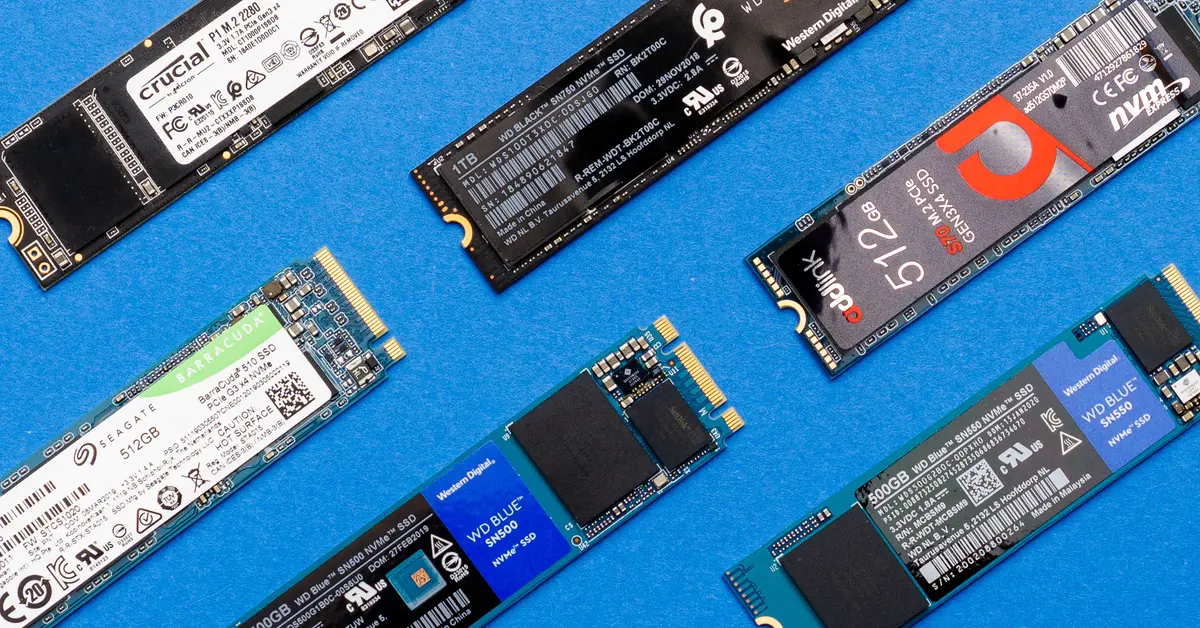Introduction
Welcome to the world of solid-state drives (SSDs), the revolutionary storage devices that are transforming the way we store and retrieve data. If you’re in the market for a new SSD, you might find yourself faced with the dilemma of choosing between a 1TB and a 512GB model. But fear not! In this article, we’ll delve into the details to help you make an informed decision.
SSDs have gained immense popularity over traditional hard disk drives (HDDs) due to their faster speeds, lower power consumption, and increased durability. With no moving mechanical parts, SSDs provide near-instantaneous access to data, resulting in quicker boot times and faster file transfers.
When it comes to storage capacity, SSDs come in various sizes, including 1TB (terabyte) and 512GB (gigabyte). These capacities determine how much data you can store on the drive. However, it’s essential to consider your specific needs and usage patterns to determine which capacity is best suited for you.
In the following sections, we’ll explore the advantages of both 1TB and 512GB SSDs, along with crucial factors to consider when making your decision. We’ll also compare the prices of these two options to help you optimize your purchase. So, let’s dive in and find out which option is better for you!
What is an SSD?
Before we compare the 1TB and 512GB SSD options, let’s take a moment to understand what an SSD is and how it differs from traditional hard disk drives (HDDs). An SSD, or solid-state drive, is a type of storage device that uses NAND flash memory to store data electronically. Unlike HDDs, which use spinning disks and mechanical read/write heads, SSDs have no moving parts.
The absence of moving components in SSDs provides several advantages. Firstly, it translates into significantly faster data access and transfer speeds. This means that tasks such as booting up your computer, launching applications, and loading files can be completed in a fraction of the time compared to HDDs. This increased speed and responsiveness can greatly enhance your computing experience.
Another benefit of SSDs is their durability. Since they lack the delicate moving parts found in HDDs, they are less prone to physical damage caused by shocks, vibrations, and drops. This makes SSDs more reliable and increases their lifespan, making them an excellent choice for both personal and professional use.
Additionally, SSDs operate silently as they don’t have spinning disks or mechanical components that produce noise. This can be particularly appealing if you prefer a quieter computing environment or if you work in a noise-sensitive setting, such as recording studios or libraries.
SSDs also consume less power compared to HDDs, which can lead to longer battery life for laptops and other portable devices. This energy efficiency not only enhances mobility but also reduces the environmental impact of your computer usage.
Overall, SSDs offer a superior storage solution with faster speeds, enhanced durability, reduced noise, and increased efficiency. Now that we have a better understanding of SSDs, let’s explore the differences between a 1TB and 512GB SSD and their respective benefits.
How do SSDs work?
Now that we’re familiar with the advantages of SSDs, let’s take a closer look at how these innovative storage devices actually work. Understanding the inner workings of SSDs can help you appreciate their performance and make an informed decision when choosing between a 1TB and 512GB SSD.
SSDs utilize NAND flash memory chips to store data. These chips consist of memory cells that hold electrical charges, representing the binary values of 0s and 1s. Unlike traditional HDDs, where data is stored magnetically on spinning disks, SSDs store information electronically in these memory cells. This difference in data storage technology is what gives SSDs their lightning-fast performance.
When you access data from an SSD, the controller within the drive retrieves the data from the memory cells. Unlike HDDs, which require read/write heads to physically move across the spinning disks to access data, SSDs can access data almost instantly. This results in significantly reduced latency and faster data transfer speeds.
SSDs also implement wear-leveling algorithms, which evenly distribute data across the memory cells. This helps prevent certain cells from wearing out faster than others, effectively increasing the lifespan and reliability of the drive.
Furthermore, SSDs use a technique called TRIM. When you delete files from an SSD, the drive marks the corresponding memory cells as empty rather than immediately erasing the data. The next time the drive needs to write new data, it can quickly fill these marked cells instead of performing more time-consuming erase operations. This TRIM feature improves the overall performance and lifespan of the SSD.
As SSD technology continues to advance, newer models are incorporating technologies like SLC (Single-Level Cell), MLC (Multi-Level Cell), and TLC (Triple-Level Cell) NAND flash memory. These technologies offer different trade-offs between performance, durability, and cost.
In summary, SSDs work by using NAND flash memory to store data electronically, eliminating the need for moving parts and allowing for lightning-fast access times. Their wear-leveling algorithms and TRIM features ensure efficient use of memory cells and prolong the lifespan of the drive. Understanding how SSDs work can help you appreciate the advantages they offer and make an informed decision when choosing the right capacity for your needs.
Size matters: 1TB vs 512GB
When it comes to SSDs, storage capacity plays a crucial role in determining how much data you can store on the drive. Let’s compare the differences between a 1TB (terabyte) and a 512GB (gigabyte) SSD to understand their respective advantages and considerations.
A 1TB SSD offers a larger storage capacity compared to a 512GB SSD. With 1TB, you have ample space to store a vast array of files, including high-resolution photos, videos, music libraries, and large software applications. This makes it an ideal option for individuals who work with multimedia content, gamers who install and store numerous games, or professionals who require a significant amount of storage for their work-related files.
On the other hand, a 512GB SSD still provides a substantial amount of storage, although it may not be as extensive as the 1TB option. With 512GB, you can comfortably store a moderate collection of files, including documents, photos, videos, and a few software applications. This capacity is often sufficient for casual users, students, or individuals who primarily use cloud storage services for their files.
It’s important to consider your specific needs and usage patterns when deciding between the two capacities. If you find that you frequently run out of space on your current storage device or require a significant amount of storage for your files, the 1TB SSD may be the better option for you. However, if you typically work with smaller file sizes or have access to cloud storage options, the 512GB SSD could provide a suitable balance between storage capacity and cost.
Another factor to consider is the future scalability of your storage needs. If you anticipate your data storage requirements to grow significantly over time, opting for the 1TB SSD can provide peace of mind and ensure you have ample space for future expansion.
It’s worth noting that the actual usable capacity of an SSD may be slightly less than the advertised capacity. This is due to the necessary formatting and file system requirements of the drive.
In summary, the choice between a 1TB and 512GB SSD depends on your storage requirements and budget. The 1TB SSD offers a larger capacity and is suited for individuals who need a significant amount of storage, while the 512GB SSD provides a more cost-effective option for moderate storage needs. Assess your specific needs and consider potential future growth to determine which size is the best fit for you.
Benefits of a 1TB SSD
A 1TB SSD offers several advantages that make it an attractive choice for individuals with high storage requirements. Let’s explore some of the benefits of opting for a 1TB SSD.
Ample Storage Space: With 1TB of storage capacity, a 1TB SSD provides you with ample space to store a large collection of files, including photos, videos, music libraries, and software applications. You won’t have to worry about running out of space or constantly managing your storage to make room for new files.
Enhanced Performance: SSDs are known for their superior performance compared to traditional hard disk drives (HDDs). With a 1TB SSD, you can enjoy lightning-fast data access and transfer speeds, resulting in quicker boot times, faster file transfers, and smoother overall system performance.
Multiple Usage Scenarios: The large capacity of a 1TB SSD makes it suitable for a variety of usage scenarios. Whether you’re a creative professional working with high-resolution media files, a gamer with a vast library of games, or someone who needs extensive storage for work-related data, a 1TB SSD can meet your needs without compromising on performance.
Convenience and Organization: Having all your files conveniently stored on a single 1TB SSD can help keep your digital life organized. You won’t have to juggle multiple storage devices or worry about finding and accessing files scattered across different drives. Everything is easily accessible in one place, saving you time and simplifying your workflow.
Future-Proofing: If you anticipate your storage needs growing in the future, investing in a 1TB SSD can provide peace of mind. As file sizes increase and software applications become more demanding, having a larger storage capacity ensures that you have sufficient space to accommodate future growth without the need for upgrading or replacing your SSD too soon.
While a 1TB SSD offers numerous benefits, it’s important to consider your specific needs and budget. The larger capacity does come at a higher price point compared to smaller capacity SSDs. Therefore, if you don’t require such extensive storage or if you have budget constraints, you might want to consider alternative options such as a 512GB SSD.
Ultimately, the benefits of a 1TB SSD make it an excellent choice for users with high storage requirements, allowing for seamless performance, convenience, and future scalability. Assess your needs, consider the potential advantages, and weigh them against the cost to determine if a 1TB SSD is the right option for you.
Benefits of a 512GB SSD
A 512GB SSD offers several benefits that make it a compelling choice for individuals with moderate storage needs. Let’s explore some of the advantages of opting for a 512GB SSD.
Cost-Effective Storage Solution: If you’re looking for a more budget-friendly option, a 512GB SSD can offer a balance between storage capacity and cost. It provides a substantial amount of storage without the higher price tag associated with larger capacity SSDs.
Fast and Responsive Performance: Like their larger counterparts, 512GB SSDs offer fast and responsive performance. With near-instantaneous data access and transfer speeds, you can enjoy snappy boot times, quick file opening, and smooth application performance.
Optimized for Portability: If you frequently travel or use a portable device such as a laptop, a 512GB SSD is a great choice. It strikes a balance between storage capacity and portability, allowing you to carry your files, documents, and media with you without sacrificing performance.
Efficient File Management: A 512GB SSD provides ample storage for most users, allowing you to comfortably store a variety of files, such as documents, photos, videos, and a selection of software applications. It encourages efficient file management by encouraging you to prioritize and organize your most essential files while leveraging cloud storage options for less frequently accessed data.
Lower Impact on Battery Life: SSDs are known for their energy efficiency, and a 512GB SSD is no exception. It consumes less power compared to traditional hard drives, which can help extend the battery life of your laptop or other portable devices. This allows you to work or enjoy your media for longer periods without needing to worry about finding a power outlet.
While the benefits of a 512GB SSD are numerous, it’s essential to consider your specific storage needs. If you plan to work with large media files, have a vast software library, or require an extensive collection of high-resolution games, you may find a 1TB SSD or larger more suitable for your requirements.
Ultimately, a 512GB SSD strikes a balance between storage capacity, cost-effectiveness, and performance. It caters to the needs of users who require a substantial amount of storage while providing an optimal solution for everyday computing tasks, portability, and efficient file management.
Consider your usage patterns, the types of files you work with, and your budget to determine if a 512GB SSD is the right choice for you.
Considerations when choosing between 1TB and 512GB
Choosing between a 1TB and 512GB SSD can be a challenging decision, as both options offer their own set of advantages and considerations. Here are some key factors to keep in mind when making your choice:
Storage Needs: Assess your storage needs and usage patterns. Consider the types of files you work with and whether you require extensive storage for large media files, software applications, or a large game library. A 1TB SSD provides ample space for those with high storage requirements, while a 512GB SSD caters to more moderate storage needs.
Budget: Determine your budget and evaluate the cost difference between the two options. A 1TB SSD typically comes with a higher price tag compared to a 512GB SSD. Price considerations may play a significant role in your decision-making process, especially if you have specific budget constraints.
Future Growth: Consider your future storage needs and whether you anticipate requiring more space over time. If you anticipate your storage requirements increasing substantially or if you plan to work with larger files in the future, a 1TB SSD can provide more headroom for future expansion. However, if your needs are likely to remain stable or if you have access to cloud storage options, a 512GB SSD may suffice.
Performance Expectations: Both the 1TB and 512GB SSDs offer impressive performance compared to traditional hard disk drives. However, larger capacity SSDs often have slightly faster read/write speeds due to their more advanced internal hardware. If you prioritize maximum performance and speed, a 1TB SSD may be more suitable for your needs.
Portability: Consider how portable you need your storage solution to be. If you frequently travel or use a laptop, a smaller and lighter 512GB SSD might be more convenient for your on-the-go needs. However, if storage capacity outweighs portability concerns, a 1TB SSD can still provide a reasonable level of portability in a compact form factor.
Ultimately, the choice between a 1TB and 512GB SSD depends on your specific needs, budget, and priorities. Evaluate factors such as storage requirements, future growth potential, performance expectations, and portability needs to make an informed decision. Remember to strike the right balance between capacity, cost, and performance to ensure the best SSD solution for your individual needs.
Price comparison: 1TB vs 512GB SSDs
When comparing the prices of 1TB and 512GB SSDs, it’s essential to consider the cost difference and how it aligns with your budget and storage needs. Let’s delve into the price comparison of these two options.
Generally, the price of an SSD is directly proportional to its storage capacity. This means that a 1TB SSD will typically be more expensive than a 512GB SSD. The price difference can vary based on factors such as brand, technology, and specific features offered by each manufacturer.
It’s important to note that the price per gigabyte (GB) decreases as the SSD capacity increases. This means that the cost per unit of storage is generally higher for smaller capacity SSDs. As you move up to larger capacity options, the price per gigabyte tends to decrease, making it more cost-effective to opt for a higher capacity drive.
The exact price difference between a 1TB and 512GB SSD can vary significantly depending on the brand and model. On average, you can expect a 1TB SSD to cost around 1.5 to 2 times more than a 512GB SSD. This price increase may be a determining factor depending on your budget constraints and storage requirements.
It’s important to consider whether the additional storage capacity offered by a 1TB SSD justifies the higher cost. If you have extensive storage needs or plan to work with large files, the higher storage capacity may prove beneficial in the long run.
However, if you have more moderate storage needs or have access to alternative storage solutions such as cloud storage, a 512GB SSD may provide sufficient space and offer a better cost-effective solution.
It’s worth noting that the price of SSDs has been steadily decreasing over time as technology advances and manufacturing processes become more efficient. As a result, SSDs are becoming more accessible and affordable for consumers.
Additionally, it’s advisable to compare prices and research different brands and models to find the best value for money. Keep in mind that pricing can also vary depending on promotions, discounts, and specific sales events.
In summary, the price comparison between a 1TB and 512GB SSD shows that the larger capacity option generally comes with a higher price tag. Assess your storage needs, budget, and cost per gigabyte to determine whether the additional storage offered by a 1TB SSD justifies the higher cost for your specific circumstances.
Conclusion
Choosing between a 1TB and 512GB SSD ultimately depends on your specific needs, budget, and priorities. Let’s recap the key points to help you make an informed decision:
1. Storage Needs: Assess the amount of storage you require for your files, including documents, photos, videos, and software applications. Consider whether you need extensive storage or if a more moderate capacity would suffice.
2. Budget: Take into account the cost difference between a 1TB and 512GB SSD, and evaluate how it aligns with your budget constraints. Determine the value you place on the additional storage capacity offered by a 1TB SSD.
3. Future Growth: Consider your future storage needs and assess whether you anticipate requiring more space over time. This will help determine if opting for a larger capacity SSD, such as a 1TB model, is a worthwhile investment to accommodate future expansion.
4. Performance Expectations: Both 1TB and 512GB SSDs offer excellent performance compared to traditional hard drives. If you prioritize maximum performance and require faster read and write speeds, a 1TB SSD may better suit your needs.
5. Portability: Evaluate the level of portability you need from your storage solution. If you frequently travel or use a portable device, a smaller and lighter 512GB SSD may be more convenient for your on-the-go needs.
Ultimately, the best choice between a 1TB and 512GB SSD will depend on weighing these factors and finding the right balance for your specific circumstances. Consider your storage requirements, future growth potential, performance expectations, and budget constraints to make an informed decision.
Regardless of your choice, both 1TB and 512GB SSDs offer substantial benefits compared to traditional hard drives, including faster speeds, improved durability, and increased efficiency. Whichever capacity you choose, upgrading to an SSD will provide a significant boost to your overall computing experience.
Remember, technology continues to advance, and SSD prices are becoming increasingly affordable. Ongoing research and staying abreast of the latest developments can help you find the best SSD for your needs at the right price point.
So, take the time to evaluate your requirements, compare prices, and choose the SSD that will take your storage and performance to the next level.







